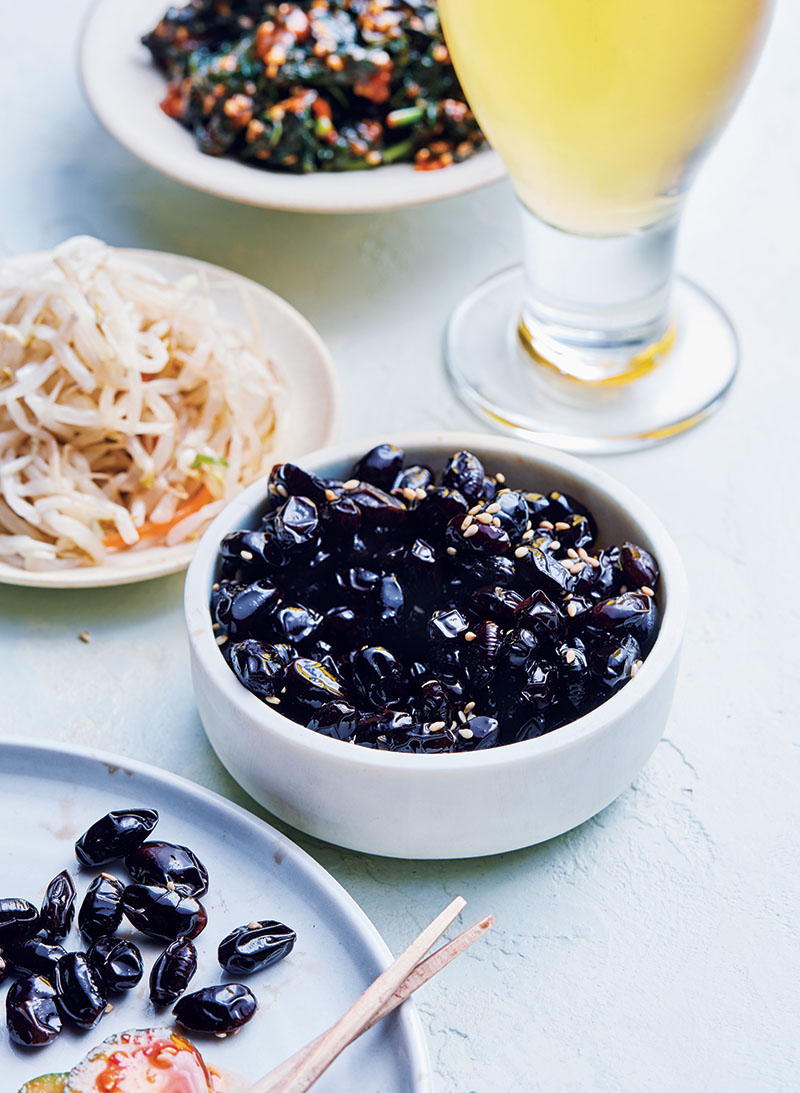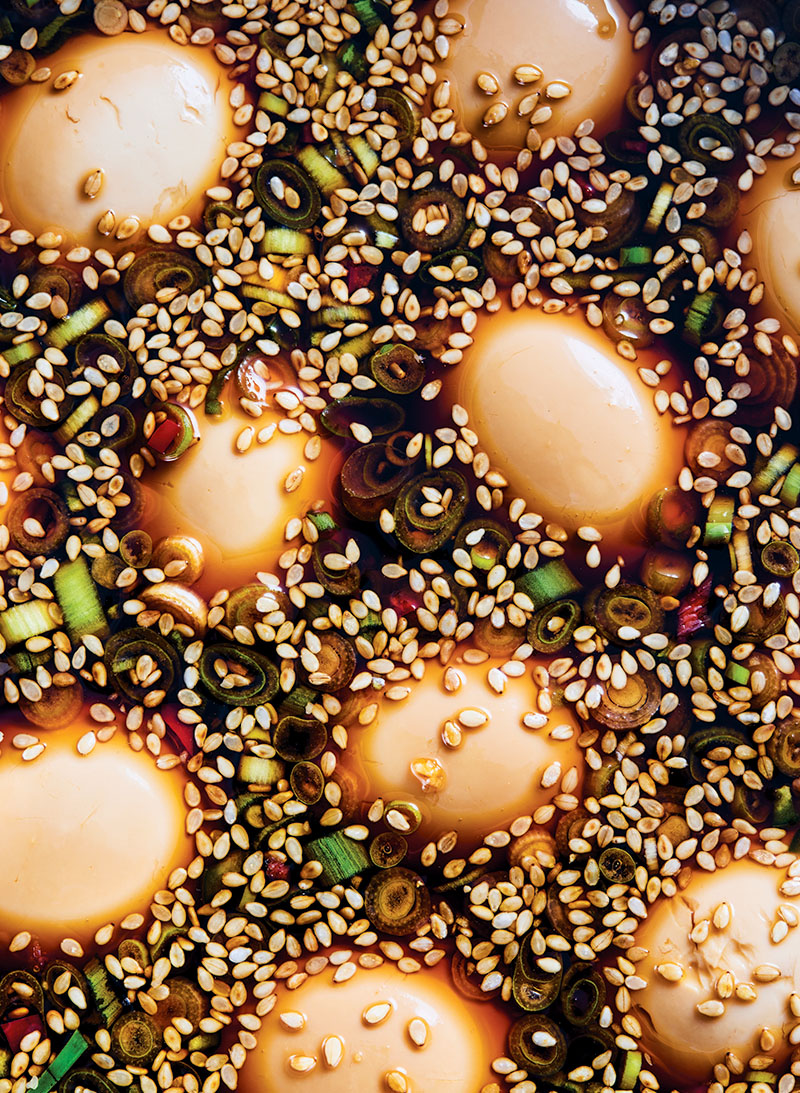Korean Banchan: 4 Recipes You Have to Try
Little Dishes, Big Flavor
Banchan are Korean small plates of punchy flavors meant to top bowls of rice, and often served with a main protein. Served hot or cold, they’re designed to enliven your taste buds, much like an amuse-bouche, but in a simple, casual way. They range from sweet to super savory, providing piquant, funky, acidic or bitter accents to a meal. In restaurants, these flavorful side dishes can be a useful way to cross-utilize ingredients, minimize food waste and batch-cook.
Banchan Recipes:
 “Every Korean family has a whole bunch of banchan in their refrigerator,” says chef Hooni Kim, owner of Little Banchan Shop in Queens, New York, where he has more than 80 banchan recipes on rotation.
“Every Korean family has a whole bunch of banchan in their refrigerator,” says chef Hooni Kim, owner of Little Banchan Shop in Queens, New York, where he has more than 80 banchan recipes on rotation.
“That’s what makes a Korean meal easy, in a sense, because you have cold banchan in the fridge and all you need is a bowl of rice. When you have guests over, the more banchan, the better the meal is for your guests. Flavor combinations are very subjective and individual.” Bright, acidic and crisp cucumber banchan might be used to cut through a fatty cut of meat, whereas a sweeter banchan might contrast and bring balance to a hot and spicy stew.
Kimchi is the most ubiquitous, which Kim calls the “Beyoncé of banchan.” Fermentation plays an important role in many banchan recipes, adding probiotic health benefits. Many banchan, whether pickled, braised or stewed, can be refrigerated for a week or more, like Kim’s childhood favorite, stewed sweet dried black beans cooked with soy sauce, sugar and sesame oil, then served cold over hot rice.
 “Substituting canned beans will not work because they will overcook and turn to mush,” he warns. “It’s important to add the sugar at the end after the beans are tender, because adding the sugar in the beginning will cause the beans to harden when refrigerated.” Another favorite sweeter banchan is stir-fry fish cakes. Kim used to make labor-intensive fish cakes from scratch at his former restaurant Hanjan, but he suggests purchasing frozen fish cakes as a shortcut to achieve the same flavors.
“Substituting canned beans will not work because they will overcook and turn to mush,” he warns. “It’s important to add the sugar at the end after the beans are tender, because adding the sugar in the beginning will cause the beans to harden when refrigerated.” Another favorite sweeter banchan is stir-fry fish cakes. Kim used to make labor-intensive fish cakes from scratch at his former restaurant Hanjan, but he suggests purchasing frozen fish cakes as a shortcut to achieve the same flavors.
“Most commercial brands of fish cakes contain quite a bit of MSG,” he says. “If you’re sensitive to it, as I am, an easy way to get rid of some of the MSG is to boil the fish cakes in water for a couple of minutes.” Kim then re-seasons the springy fish cakes with soy, sugar, minced garlic and sesame oil, adding thinly sliced green bell peppers and onions into the mix. These fish cakes reheat easily in the microwave, and can be served hot or cold.
 In Chicago, Chef Dave Park serves a contemporary Korean tasting menu at Jeong, but incorporates the idea of banchan into garnishes and accouterments. “Our scallop course is served with spinach namul, a classic Korean side dish that we lay right next to the scallop on the same plate,” he explains. One of Park’s popular banchan is lightly fried slices of kabocha squash, drizzled with gochugaru honey and sprinkled with toasted black sesame seeds.
In Chicago, Chef Dave Park serves a contemporary Korean tasting menu at Jeong, but incorporates the idea of banchan into garnishes and accouterments. “Our scallop course is served with spinach namul, a classic Korean side dish that we lay right next to the scallop on the same plate,” he explains. One of Park’s popular banchan is lightly fried slices of kabocha squash, drizzled with gochugaru honey and sprinkled with toasted black sesame seeds.
“Banchan help tie a meal together,” says chef Ji Hye Kim. She lists banchan on her menu at Miss Kim as either “snacks” or “appetizers” since some diners in Ann Arbor, Michigan, aren’t familiar with the term. Her gyeran jang, or soy and hot pepper marinated soft-boiled eggs, are especially versatile banchan that can be served over noodles, rice, toast or a green salad. “You can put it anywhere you would put a fried egg,” she says. Zucchini or squash jeon is another popular banchan that she likens to a reverse omelet.
“An omelet is mostly egg with a little bit of vegetables. Jeon is a mostly squash dish, and egg plays a supporting role. You can eat it as a side or breakfast.”
“Banchan tend to be very well seasoned – whether salty, spicy or sweet,” says Kim.
“From a young age, we controlled how salty and spicy things are in our mouths. So, we are used to seasoning ingredients because we’ve been doing it all our lives with every meal.”

